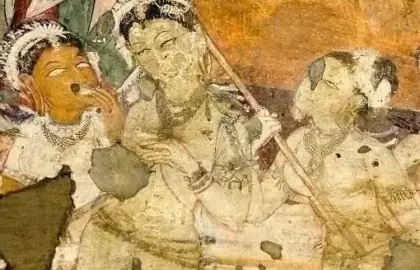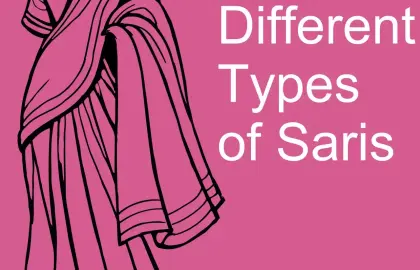The Rich Heritage of Kanchipuram Sarees - Exploring Craftsmanship and Tradition
Kanchipuram sarees, renowned worldwide for their opulence and craftsmanship, stand as a testament to India's rich textile heritage. Originating from the town of Kanchipuram in Tamil Nadu, these sarees are celebrated not just for their beauty but also for their cultural significance and intricate weaving techniques.

History and Origin
The history of Kanchipuram sarees dates back to ancient times, tracing its roots to the Chola dynasty around the 5th century CE. It is believed that the weaving tradition was brought to Kanchipuram by sage Markanda, who is said to have woven tissue from lotus fiber. Over the centuries, Kanchipuram sarees have evolved, blending tradition with contemporary trends while retaining their distinctive characteristics.
Craftsmanship and Weaving Techniques
What sets Kanchipuram sarees apart is their unique weaving technique. They are traditionally handwoven with pure mulberry silk threads, known for their durability and luxurious texture. The borders and pallu (decorative end piece) of Kanchipuram sarees are crafted separately and then interlocked with the body of the saree using a process called Korvai. This intricate weaving process ensures that the saree is strong yet lightweight, draping elegantly and enhancing the wearer's silhouette.
Design and Motifs
Kanchipuram sarees are characterized by their rich colors, bold patterns, and elaborate motifs inspired by nature, temples, and traditional art forms. The borders are often adorned with intricate designs such as checks, stripes, floral patterns (including jasmine and rose motifs), and mythical creatures like yalis (lion-like figures). The pallu is where the weavers showcase their creativity, often featuring grand motifs and intricate detailing.
Cultural Significance
Beyond their aesthetic appeal, Kanchipuram sarees hold immense cultural significance. They are considered auspicious attire for weddings and religious ceremonies in South India, symbolizing purity, prosperity, and tradition. It is customary for brides to wear Kanchipuram sarees on their wedding day, as they are believed to bring blessings and good fortune.
Modern Adaptations and Global Appeal
While traditional Kanchipuram sarees remain timeless classics, contemporary adaptations cater to modern tastes. Designers experiment with color combinations, motifs, and weaving techniques to appeal to a global audience while preserving the essence of the original craftsmanship. The demand for Kanchipuram sarees continues to grow internationally, with fashion enthusiasts and collectors appreciating their heritage and artistry.
Preserving Heritage and Sustainability
Preserving the heritage of Kanchipuram sarees involves supporting traditional weaving communities and promoting sustainable practices. Many organizations and designers collaborate with weavers to ensure fair wages, ethical sourcing of materials, and eco-friendly production processes. By investing in a Kanchipuram saree, one not only acquires a timeless piece of art but also contributes to the livelihoods of skilled artisans and the sustainability of traditional crafts.
Conclusion
In conclusion, Kanchipuram sarees are more than just garments; they are a symbol of India's rich cultural heritage, craftsmanship, and timeless elegance. Each saree tells a story of tradition, artistry, and community. At Desi-Celeb, we invite you to explore our exquisite collection of Kanchipuram sarees, where heritage meets contemporary allure. Embrace the legacy of Kanchipuram sarees and adorn yourself with a piece of history that transcends generations.
This comprehensive guide not only highlights the allure and craftsmanship of Kanchipuram sarees but also serves as a valuable resource for enthusiasts and collectors alike.









